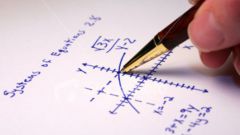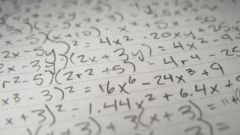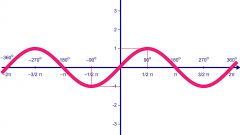Instruction
1
Find the derivative of the function. The derivative measures the rate of change of a function at a point is defined as the limit of the ratio of the increment function to increment of argument, which tends to zero. To identify it, use the table of derivatives. For example, the derivative of the function y = x3 is equal to y’ = x2.
2
Paranaita this derivative to zero (in this case, x2=0).
3
Find the value of the variable in the expression. It will be the values at which this derivative is equal to 0. To do this, substitute in the expression of arbitrary numbers instead of x in which the entire expression will become zero. For example:
2-2x2= 0
(1-x)(1+x) = 0
x1= 1, x2 = -1
2-2x2= 0
(1-x)(1+x) = 0
x1= 1, x2 = -1
4
The values obtained apply to direct coordinate and calculate the sign of the derivative for each of the periods. On the coordinate axis are marked points, which are taken as the starting point. To calculate the value of on intervals, substitute arbitrary values, appropriate criteria. For example, for the previous function to the interval -1 to choose a value of -2. On the interval from -1 to 1, you can choose 0, and for values greater than 1, select 2. Substitute these figures in the derivative and determine the sign of the derivative. In this case the derivative with x = -2 is equal to -0,24, i.e. negative on this interval will be a minus sign. If x=0, the value will be 2, and so on this interval is a positive sign. If x=1 then the derivative will also be equal to -0,24 and therefore is negative.
5
If the passage through the point on the coordinate axis the derivative changes its sign from minus to plus, it is a minimum point, and if from plus to minus, it is a maximum point.
Useful advice
For finding the derivative, there are online services that calculate the desired values, and output the result. On these sites you can find the derivative to 5 order.














